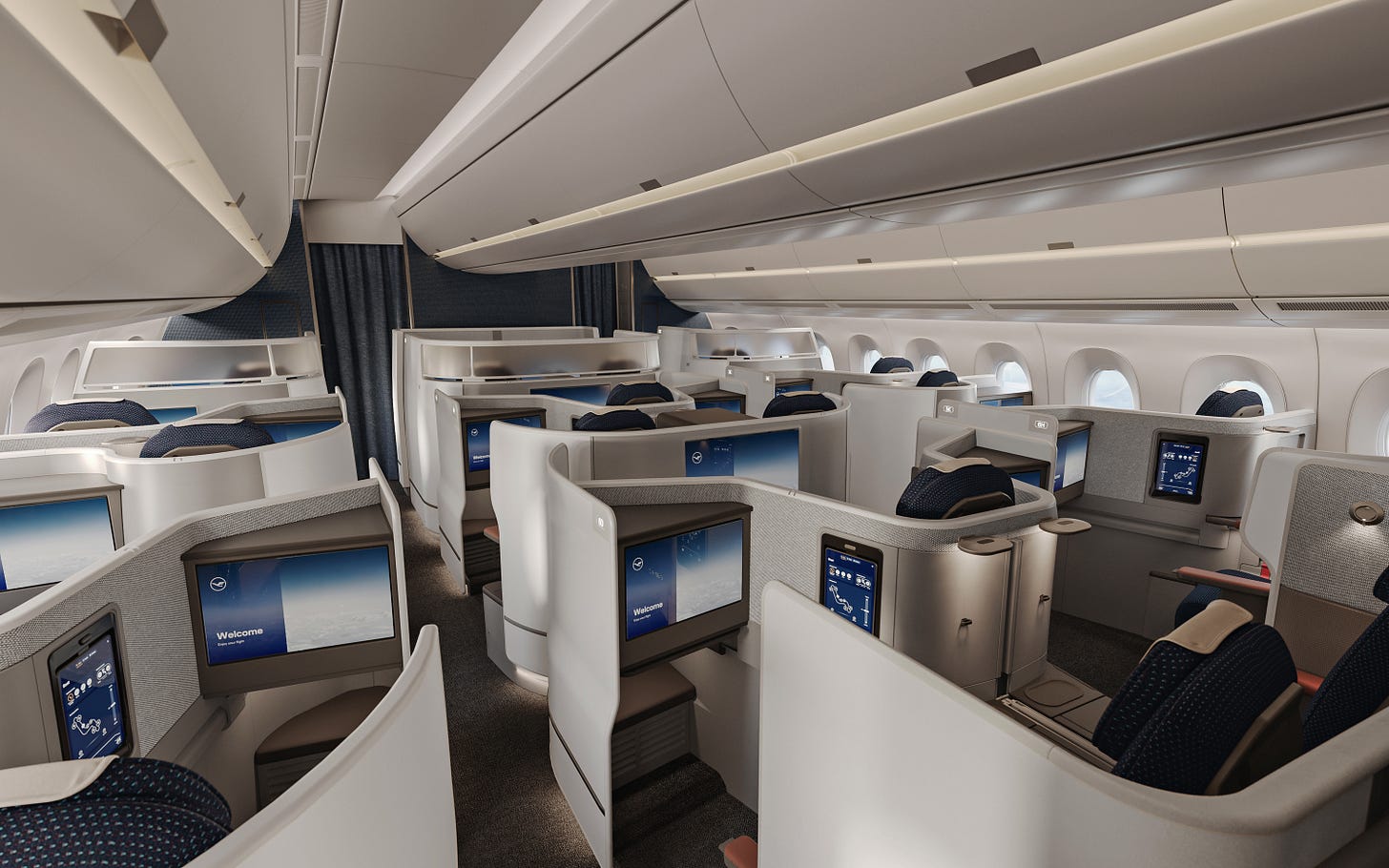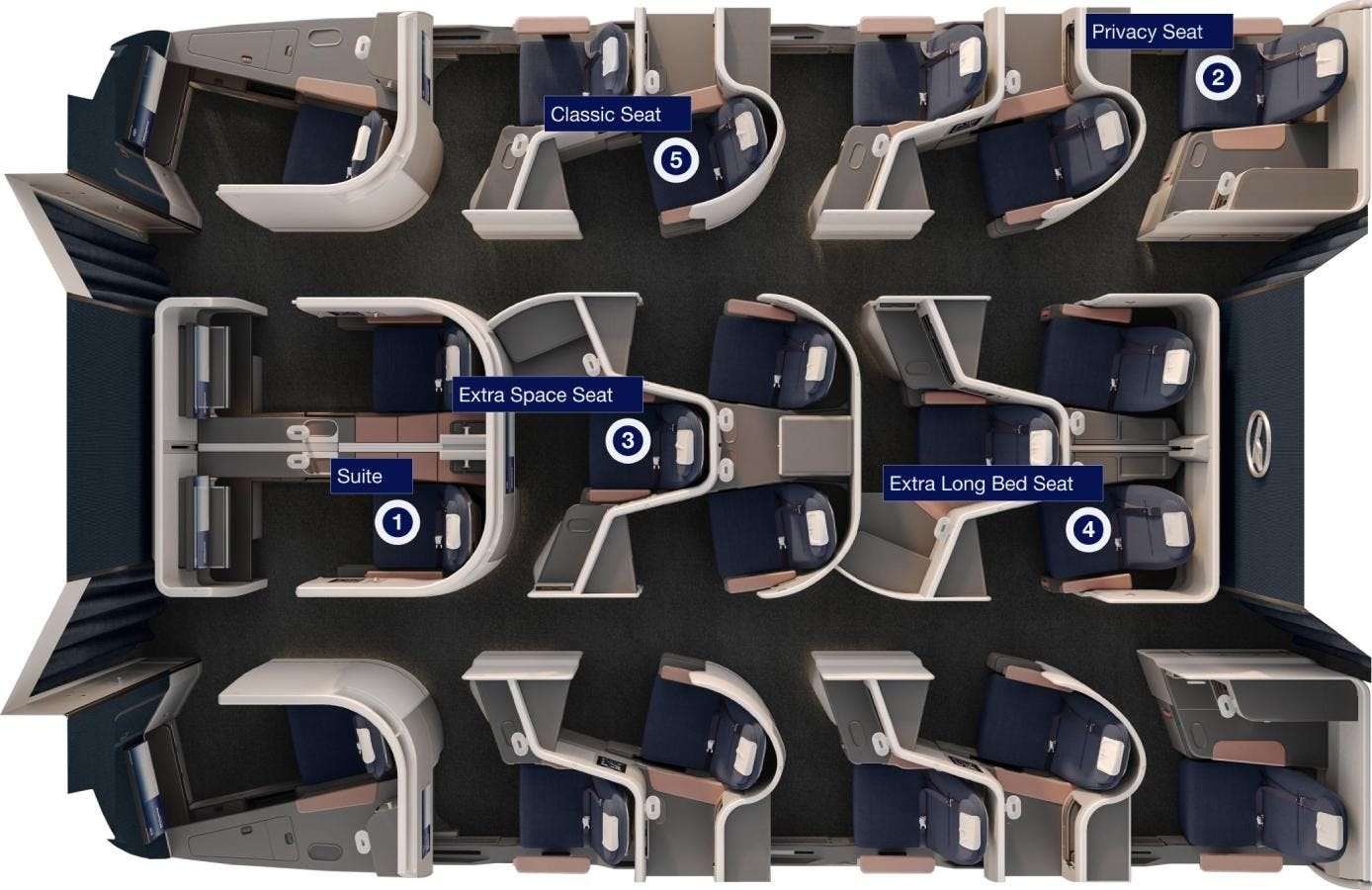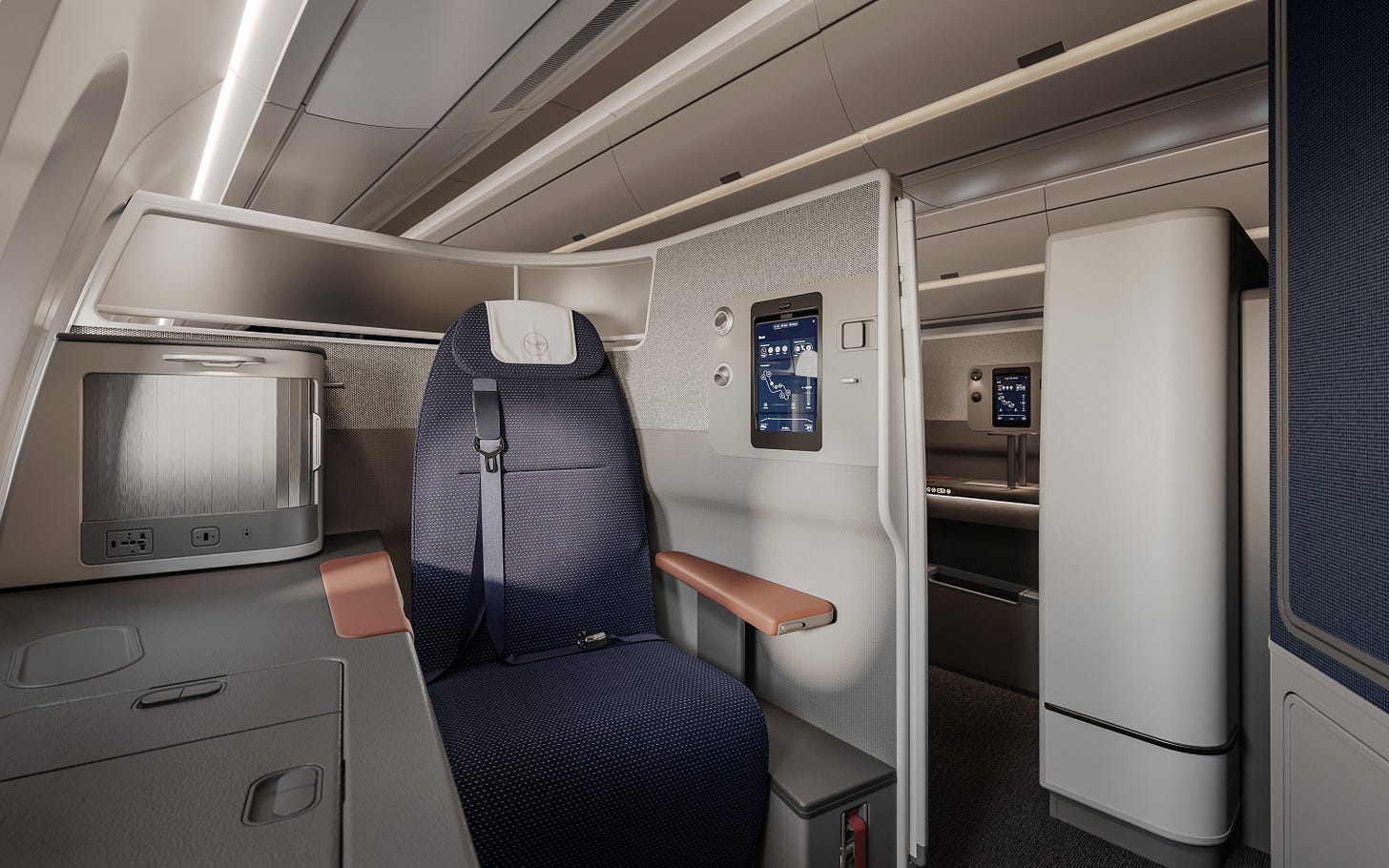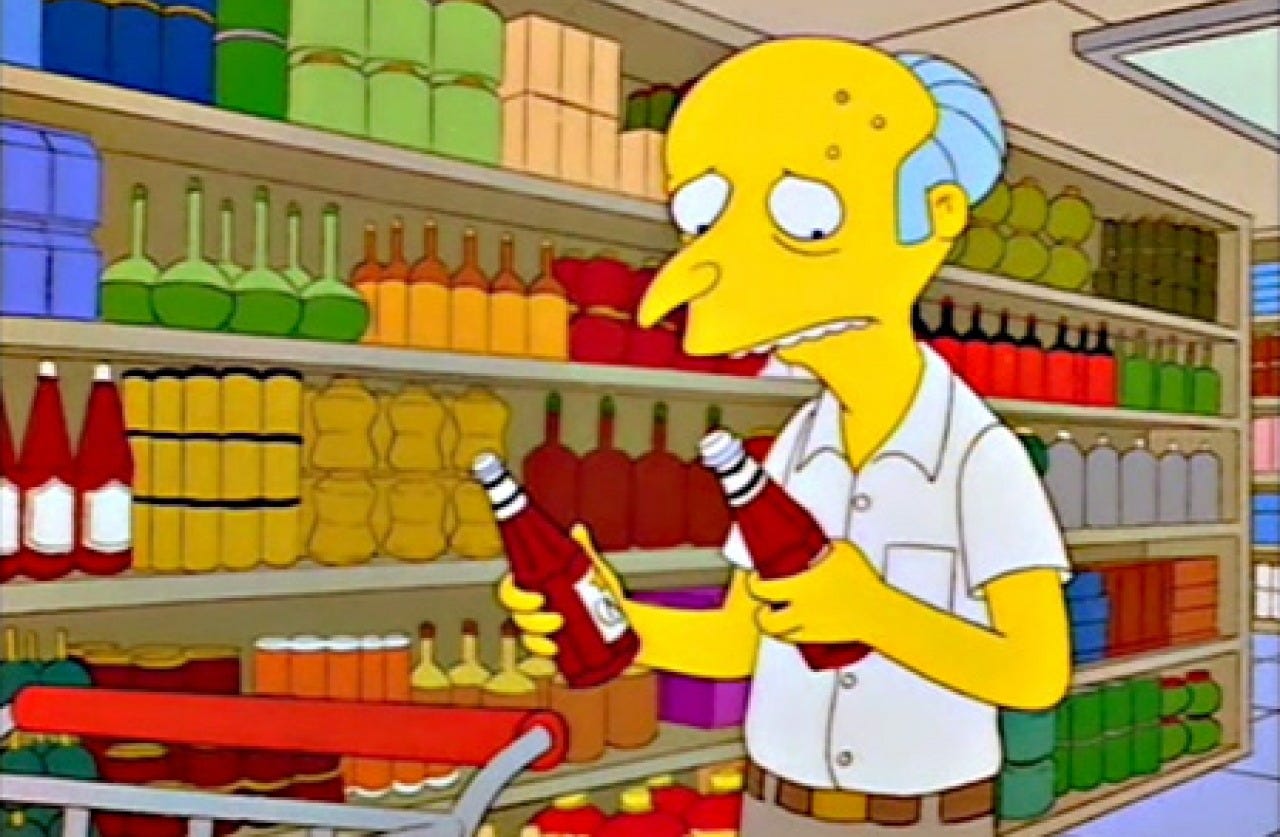The seat map from hell
Why the Germans don't always do it better
Steering the UK economy, managing the Labour Party and now running a German airline — three activities this newsletter might credibly stand accused of believing it could do better than the people actually in charge. For the avoidance of doubt, I do not think hiring me would represent an upgrade on Rachel Reeves or Keir Starmer. But overseeing the rollout of Lufthansa’s new business class? Give me a call, Frankfurt — I could scarcely do worse.
This week, the German carrier announced it would fly its wide-body Boeing 787s without business class. Note: that is not without business class seats, but with the cabin either mostly or entirely blocked off. The seats work just fine. They are more comfortable than the previous generation, provide all-aisle access and certainly beat sitting in economy. Still, you can’t sit there — the damn things are not yet certified.
Lufthansa is waiting on the US Federal Aviation Administration to sign off. This is usually a simple procedure, but little has gone smoothly with the rollout of the airline’s new business class concept, Allegris. The cabin’s setup is insanely complicated and wildly over-engineered, creating a headache not only for regulators but also crews, maintenance teams and bewildered passengers. I would donate plasma to read the market research that went into this decision.
Instead of all seats being made equal, as with British Airways’ Club Suite, Allegris offers up to eight unique seating options, making Dutch politics appear positively streamlined by comparison. Each seat type has different dimensions and features: front row double suites, single suites, privacy seats, extra-long seats, extra-space seats, classic seats, classic double seats and bassinet seats. Less like a premium cabin, more like a furniture showroom. And you just wanted to eat a passable meal and catch some sleep.
From a chief financial officer’s perspective, I can just about understand the rationale. Lufthansa will be able to charge a premium to those passengers who want to select a seat that best matches their preferences. A tall person may be prepared to shell out an additional few hundred euros for the extra-long seat. Someone who just wants to conk out may be convinced of the need to do the same for the privacy seat.
Rory Sutherland, vice-chairman of Ogilvy Group and something of an unexpected social media star, has highlighted a similar phenomenon in the hotel sector. When you book a room, you will usually be able to choose between standard, deluxe, junior suite, premium suite and so on. In other words, delineated by size and amenities. But some hotels are now offering customers the opportunity to pay an additional fee for a room near the pool or the gym.
The charge to select might be fairly minor compared with the cost of the room itself. But no additional investment is required in terms of facilities or staffing. The brilliance lies in the fact that the hotel has created value out of nothing, by simply defining something differently. This, it appears, is what Lufthansa was attempting. But it may have overcorrected. Humans like to have options, but can quickly become overwhelmed when faced with too many.
This is the ‘paradox of choice’, the most celebrated evidence for which comes via the medium of jam. Mark Lepper and Sheena Iyengar, both psychologists, set up a gourmet jam-tasting stall in a high-end California supermarket, offering customers a choice between either six, 24 or 30 options. It transpired that, while the larger display attracted more excitement, the smaller one actually drove more sales.
All of a sudden, ‘less is more’ became conventional wisdom. But how does this explain the success of Starbucks, with its thousands of highly itemisable options and revolting coffee? It turns out, the results from Lepper and Iyengar’s experiment proved not to be highly replicable. Instead, the answer to whether consumers prefer more or less choice is a frustrating, “It depends”.
Itamar Simonson, who helped run a 2016 study for Stanford Business School on the effect of assortment size on purchase decisions, explains:
“Every decision is really two decisions. If your first decision is about whether you want to buy, then having more options is conducive to buying. But if your first decision is on which specific product to select, then having a big assortment can make it more difficult to identify the best option.”
So, here is the €3,000 to €10,000 question (depending on route, date and other factors): where should you sit in Allegris business class? I wouldn’t worry about it. You’ll probably end up getting their old seat anyway.







Interesting and thoughtful as ever Jack.
The paradox of choice explains why big consumer goods companies hardly ever invent new products, they simply buy up promising startups. Meanwhile successful marketing careers are built on “ line extensions “ or proliferating existing brands with “New improved”, more flavours, more pack sizes, multi-packs etc etc. to command more shelf space.
I know, I was that soldier!
Oh, you hate Starbucks' coffee, too, Jack. I'm not alone.